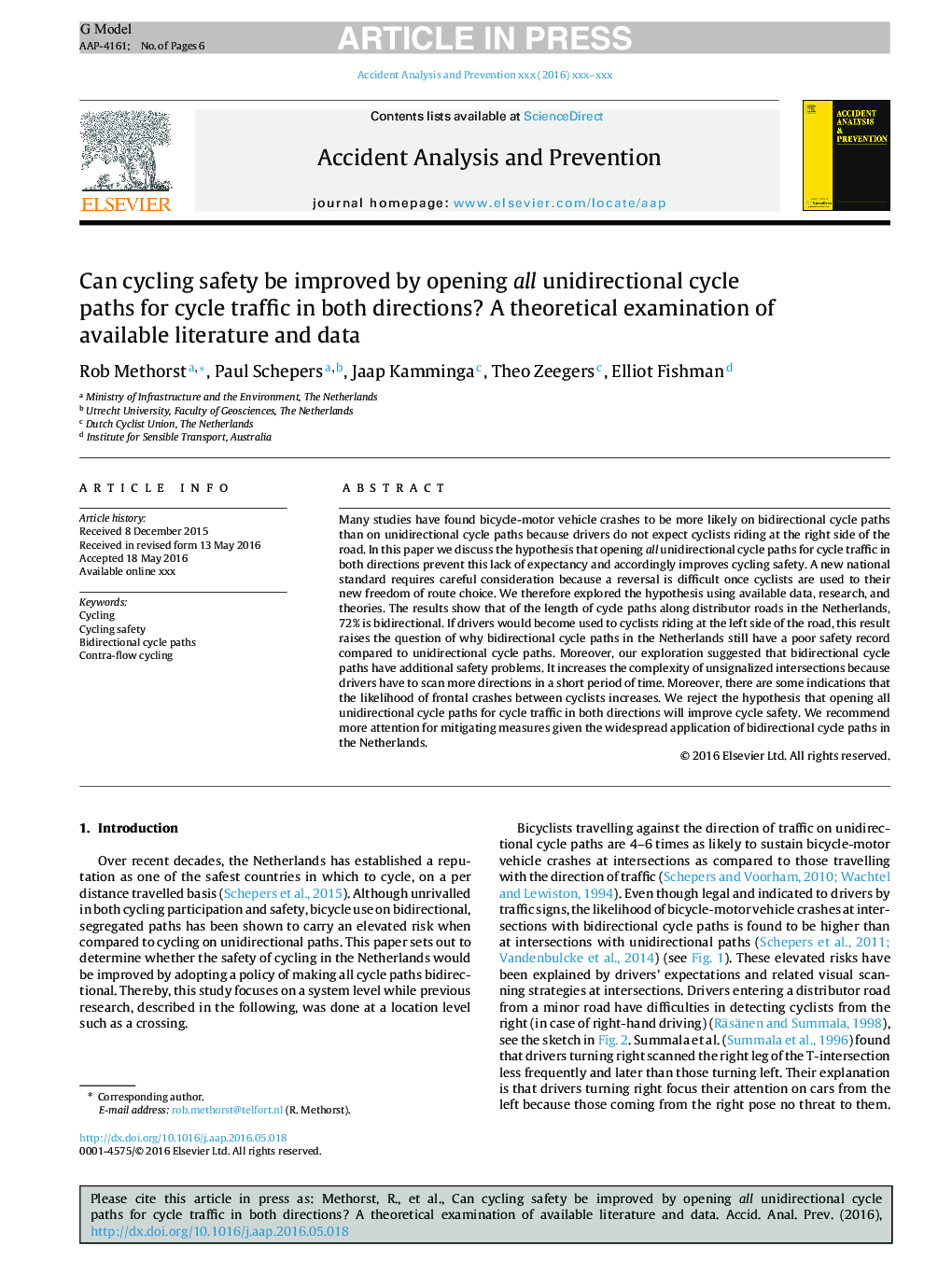| Article ID | Journal | Published Year | Pages | File Type |
|---|---|---|---|---|
| 4978570 | Accident Analysis & Prevention | 2017 | 6 Pages |
Abstract
Many studies have found bicycle-motor vehicle crashes to be more likely on bidirectional cycle paths than on unidirectional cycle paths because drivers do not expect cyclists riding at the right side of the road. In this paper we discuss the hypothesis that opening all unidirectional cycle paths for cycle traffic in both directions prevent this lack of expectancy and accordingly improves cycling safety. A new national standard requires careful consideration because a reversal is difficult once cyclists are used to their new freedom of route choice. We therefore explored the hypothesis using available data, research, and theories. The results show that of the length of cycle paths along distributor roads in the Netherlands, 72% is bidirectional. If drivers would become used to cyclists riding at the left side of the road, this result raises the question of why bidirectional cycle paths in the Netherlands still have a poor safety record compared to unidirectional cycle paths. Moreover, our exploration suggested that bidirectional cycle paths have additional safety problems. It increases the complexity of unsignalized intersections because drivers have to scan more directions in a short period of time. Moreover, there are some indications that the likelihood of frontal crashes between cyclists increases. We reject the hypothesis that opening all unidirectional cycle paths for cycle traffic in both directions will improve cycle safety. We recommend more attention for mitigating measures given the widespread application of bidirectional cycle paths in the Netherlands.
Keywords
Related Topics
Physical Sciences and Engineering
Chemical Engineering
Chemical Health and Safety
Authors
Rob Methorst, Paul Schepers, Jaap Kamminga, Theo Zeegers, Elliot Fishman,
